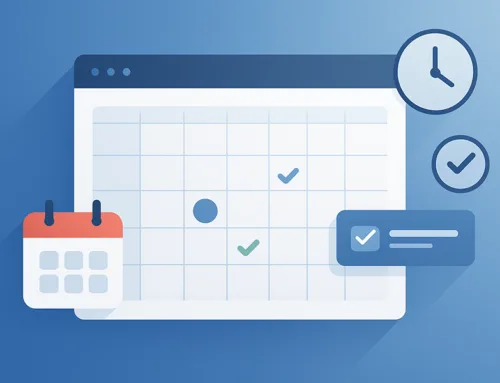Did you know that video content is 53 times more likely to show up on the first page of Google search results? That’s because videos are a great way to engage and inform your audience.
In order to take full advantage of this, it’s important to optimise your videos for search. In this guide, we will walk you through the steps necessary for optimising your video content. By following these video SEO tips, you can increase viewership and improve your SEO ranking!
What is Video SEO?
Video SEO is the process of optimising your videos to rank higher in search engine results pages (SERPs). Just like with traditional SEO, there are a number of factors that come into play when it comes to ranking. These include things like title, description, keywords, and thumbnail image.
By optimising these elements, you can make your videos more visible and attractive to both potential viewers and search engines.
Video SEO in 10 Steps
Now that we’ve covered the basics, let’s get into the nitty-gritty of video SEO. These are the ten steps you need to take in order to optimise your videos for search:
Step 1: Do Video Keyword Research
The first step in any SEO process is keyword research. This is because keywords are what people use to search for content. In order to rank your videos, you need to find the right keywords that people are searching for.
There are a number of tools you can use to do this, such as Google AdWords Keyword Planner and Google Trends. Once you’ve found the right keywords, you can start incorporating them into your video title and description.
Step 2: Create a Quality Script and Video
Once you’ve done your keyword research, it’s time to start creating your video. This is where a lot of businesses make the mistake of thinking that any old video will do.
However, nothing could be further from the truth. In order for your video to be successful, it needs to be high quality. This means having a well-written script and ensuring that the video is visually appealing.
If you don’t have the internal resources to create a high-quality video, consider working with a professional video production company.
Step 3: Get Your Video Title and Description Right
Your video title and description are two of the most important elements of your video SEO. This is because they are what show up in the search results.
Your title should be attention-grabbing and include your target keyword. Your description should be clear and concise, providing viewers with enough information to pique their interest.
Step 4: Make the Video Appealing with a Compelling Thumbnail Image
Your video may be high quality, but if the thumbnail doesn’t look appealing, people are less likely to click on it. This is why it’s important to spend some time creating a compelling thumbnail image.
Your thumbnail should be attention-grabbing and relevant to the video content. It should also be clear and easy to read.
The best thumbnail images are clear and concise, with a title that matches the video content. Many creators opt to just use a screenshot from their video. However, designing bespoke thumbnail images for your videos can further increase click-through-rates and brand recognition.
Step 5: Optimise Your Video File
Your video file also needs to be optimised for search. This means including your target keyword in the file name and using the right file format.
When choosing a file name, be sure to include your target keyword. You should also make sure that the file name is unique and easy to read.
The most popular file formats for videos are .mpg, .mpeg, .mpv, and .mov. You should also make sure that your video is compressed so that it doesn’t take up too much space.
Step 6: Get Your Video Indexed by Search Engines
Once you’ve created your video, it’s time to get it indexed by search engines. The best way to do this is to submit your video sitemap to Google.
A video sitemap is a file that tells search engines about the videos on your website. This helps them index your videos so they can show up in search results.
You can create a video sitemap using a tool like XML-Sitemaps.com. Once you’ve created your sitemap, you can submit it to Google through your Google Search Console account.
Step 7: Promote Your Video
Just because your video is online doesn’t mean that people will automatically find it. You need to promote your video to get it in front of your target audience.
There are a number of ways you can promote your videos, such as through social media, email marketing, and paid advertising.
The best way to promote your video will vary depending on your target audience and where they are most active online. Experiment with different promotion methods to find what works best for you.
Step 8: Prioritise User Engagement
Search engines prioritise user engagement when ranking videos. This means that the more people who watch and interact with your video, the higher it will rank in search results.
There are a number of ways to increase user engagement, such as using annotations and adding interactive elements to your videos. You should also make sure that your videos are easy to watch and understand. This means having clear audio and easy-to-follow visuals.
Encourage viewers to like, comment, and share your videos to get more engagement.
Step 9: Get Backlinks From High DA Sites
Backlinks are one of the most important ranking factors for videos. A backlink is when another website links to your video.
The more high-quality backlinks you have, the higher your video will rank in search results.
To get backlinks, you can reach out to other websites and ask them to link to your video. You can also create high-quality content that others will want to link to. That is, when developing your website, consider such a point as the quality of video content.
Another great way to get backlinks is to comment on other people’s videos. When you leave a comment, be sure to include a link to your video.
Step 10: Monitor Your Video Performance
Once you’ve implemented all of these video SEO tips, it’s time to start monitoring your video performance.
There are a number of tools you can use to track your video views, such as Google Analytics and YouTube Analytics.
You can also use these tools to track other important metrics, such as how long people are watching your videos and where they’re coming from.
Monitoring your video performance will help you see what’s working and what isn’t. You can then make changes to improve your video ranking and get more views.
Conclusion
These are just a few of the most important steps you need to take in order to optimise your video for search. By following these tips, you can improve your chances of ranking higher in search results and getting more views. Whether you’re a content creator, a start-up that needs to scale fast, or just a local business trying to get more leads, this increased traffic will help you achieve your video goals!
But remember, optimisation is only one part of the equation. You also need to create high-quality, engaging video content if you want people to watch your videos.
If you can do both, you’ll be well on your way to success with video SEO.





